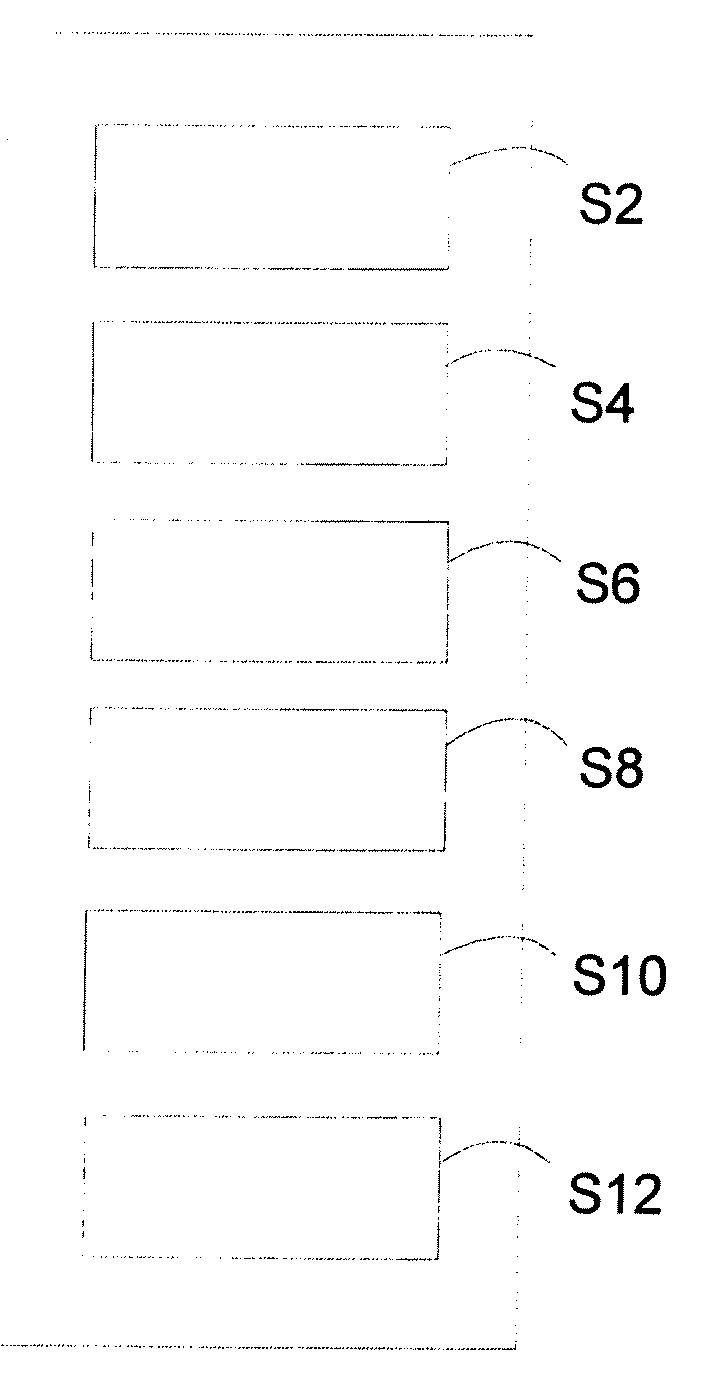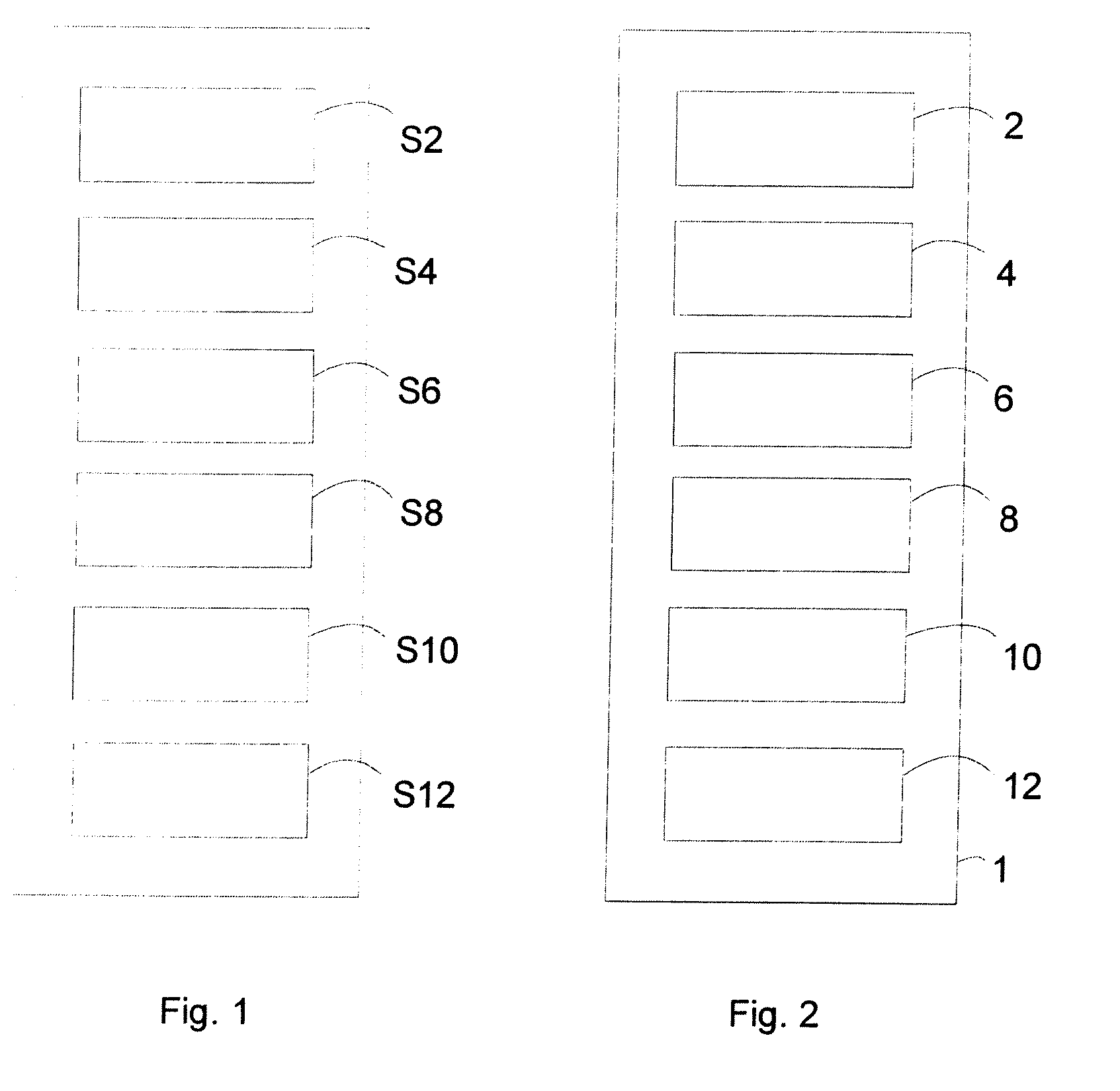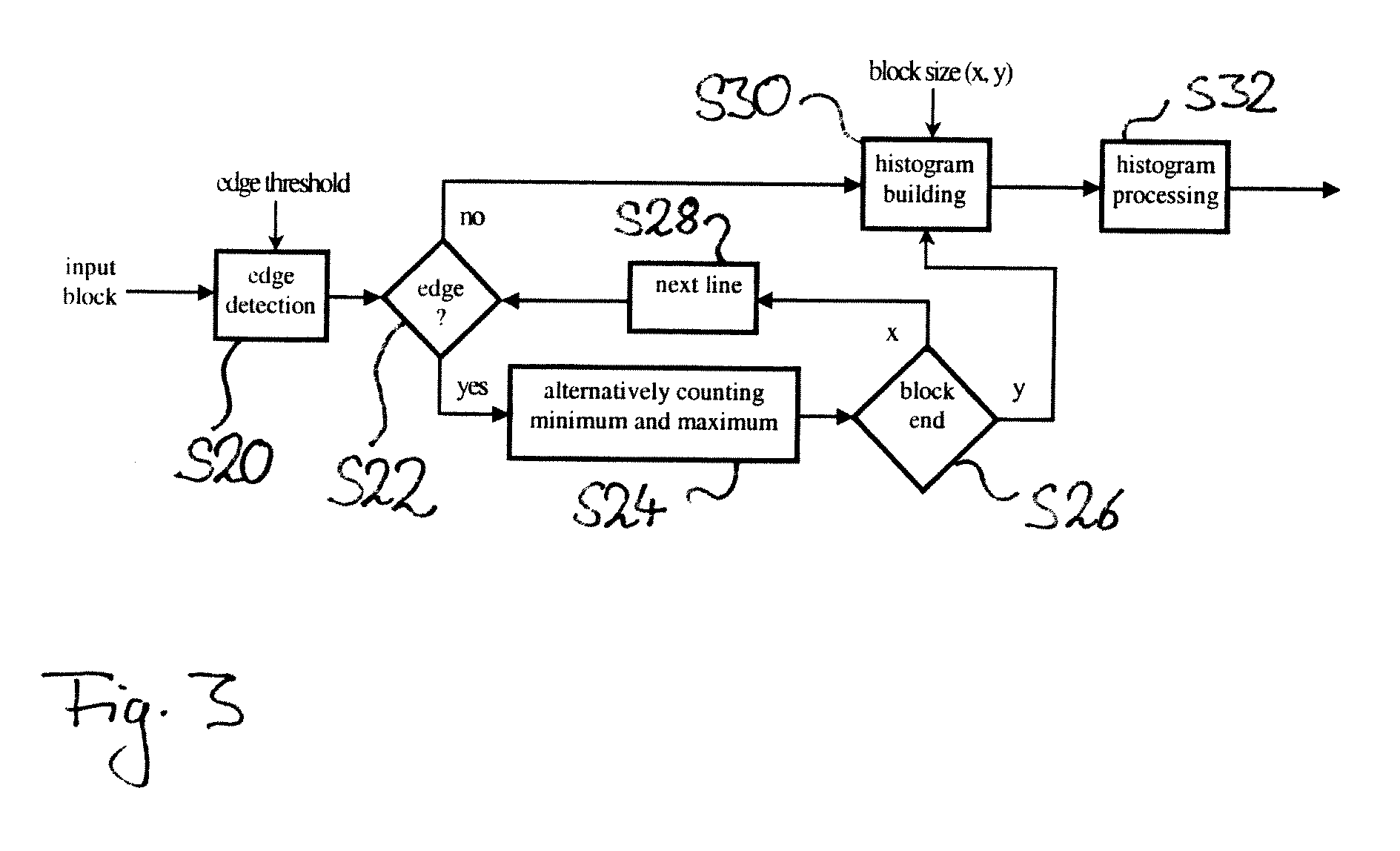Adaptive histogram equalization for images with strong local contrast
a local contrast and histogram equalization technology, applied in image enhancement, instruments, television systems, etc., can solve the problems of affecting and disturbing artifacts, etc., to achieve the effect of enhancing the contrast of digital images
- Summary
- Abstract
- Description
- Claims
- Application Information
AI Technical Summary
Benefits of technology
Problems solved by technology
Method used
Image
Examples
Embodiment Construction
[0050]FIG. 1 shows a block diagram of an adaptive histogram equalization method according to the present invention. In a step S2 an image is divided into regions of pixels. In a step S4 structures of local pixel value differences of a predefined strength of the image are determined. In a step S8, for every region, a histogram of the pixel values is built, based on the determined structures of local pixel value differences. In a step S12 pixel values of each region are mapped based on the histogram corresponding to the region. Optionally, skin colored pixels are determined in step S6. In that case, the building of the histogram in step S4 is also based on the determined skin colored pixels. Optionally, the histogram of each region is smoothed in a step S10.
[0051]These steps can be carried out for every region independently. This means for example that while one region's pixel values have already been mapped, a histogram for another region may just be built and still another region mi...
PUM
 Login to View More
Login to View More Abstract
Description
Claims
Application Information
 Login to View More
Login to View More - R&D
- Intellectual Property
- Life Sciences
- Materials
- Tech Scout
- Unparalleled Data Quality
- Higher Quality Content
- 60% Fewer Hallucinations
Browse by: Latest US Patents, China's latest patents, Technical Efficacy Thesaurus, Application Domain, Technology Topic, Popular Technical Reports.
© 2025 PatSnap. All rights reserved.Legal|Privacy policy|Modern Slavery Act Transparency Statement|Sitemap|About US| Contact US: help@patsnap.com



